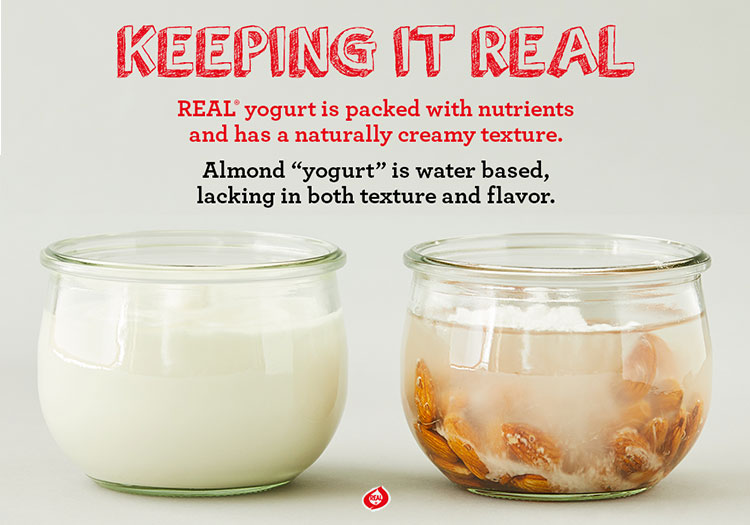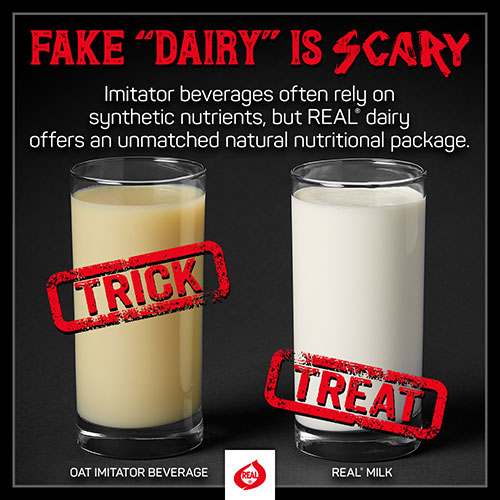
The dairy REAL Seal program has evolved to become a leaner – and in a few cases, depending on one’s perspective, meaner – marketing program during the past decade compared to the one first established some 40 years ago. After being funded nationally by checkoff groups in the 1980s, the program fell dormant until the National Milk Producers Federation took ownership of the REAL Seal in 2012.
Only dairy products made in America with American-produced cows’ milk are eligible to display the REAL Seal. Now funded entirely by companies licensed to use it, the REAL Seal allows the entire dairy value chain to pool resources to educate consumers about the benefits of real dairy foods. NMPF management also allows us to draw some sharp contrasts with dairy imitators, who seek the benefits of dairy’s image without actually delivering on what makes foods made from real milk the best choice.
The primary REAL Seal marketing arenas for consumers to learn about the dairy’s benefits are Facebook and Pinterest, two social media channels popular among families in their prime dairy-buying years. Posts are divided among those offering:
- Dairy Facts (information about the nutritional and health benefits of dairy, along with illustrations of the dubious nutritional offerings of dairy imitators)
- Dairy Hacks & Moments (suggestions on the best ways consumers can use dairy foods in their daily diets)
- “Keeping It Real” Dairy Spotlights (showcasing the offerings of those brands invested in displaying the REAL Seal on their products). This past year, our spotlights ranged from global dairy giant Nestle, to regional dairy brand Kriemhild Dairy Farms, and dozens of others.

Along with its social media content, the www.realseal.com website clarifies distinctions between the advantages of using real dairy foods and those foods that all too often fall far short of what dairy offers. The site was updated in 2019 with a buyer’s guide that helps steer shoppers to those brands with the mark.
As it has been for more than 40 years, the REAL Seal today is a stamp of quality assurance to easily highlight the real dairy deal offered in grocery stores and restaurants. It’s a smaller and more focused program than the one in the 1980s, but by using the tools of social media to target end users – and potential converts – we still deliver the message that real dairy offers the best options for consumers. As we see an increasing number of plant-based fake dairy foods – and as the prospect of lab-made, cell-cultured dairy ingredients in the market is getting nearer – we need the Real Seal to help consumers understand the quality and authenticity of American-made dairy products.





